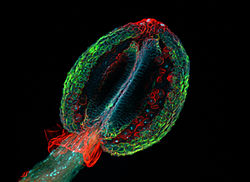This article contains one or more duplicated citations. The reason given is: DuplicateReferences script detected: (December 2025)
|

Visual artifacts (also artefacts) are anomalies apparent during visual representation as in digital graphics and other forms of imagery, especially photography and microscopy.
















